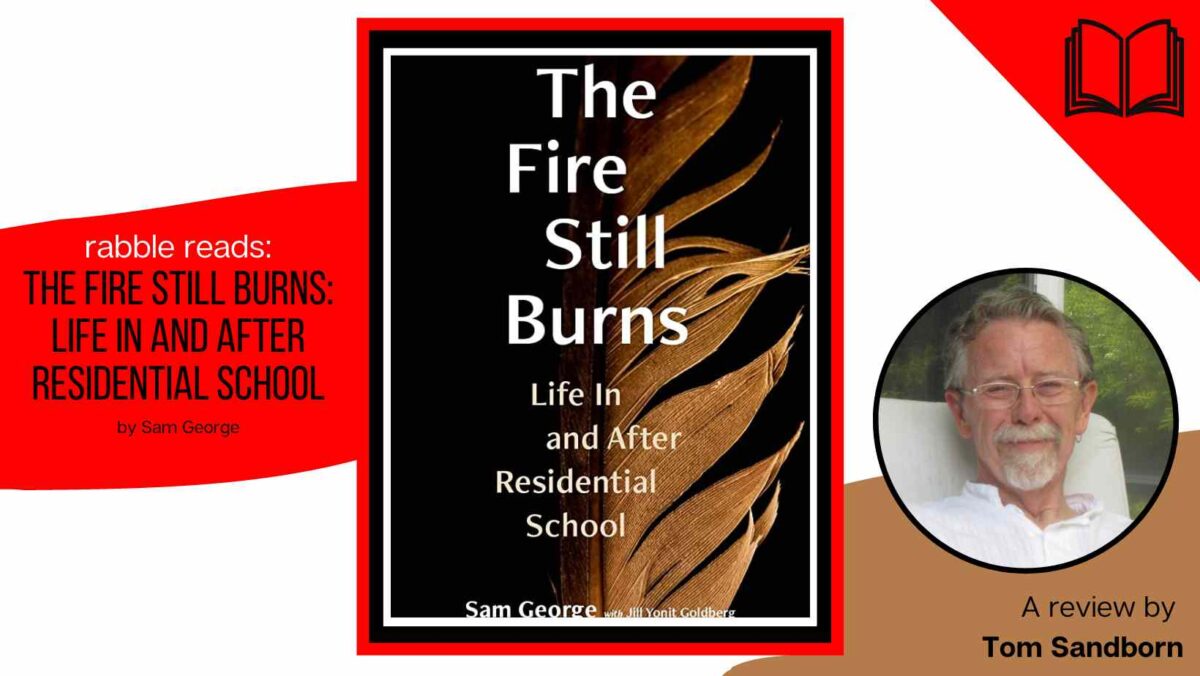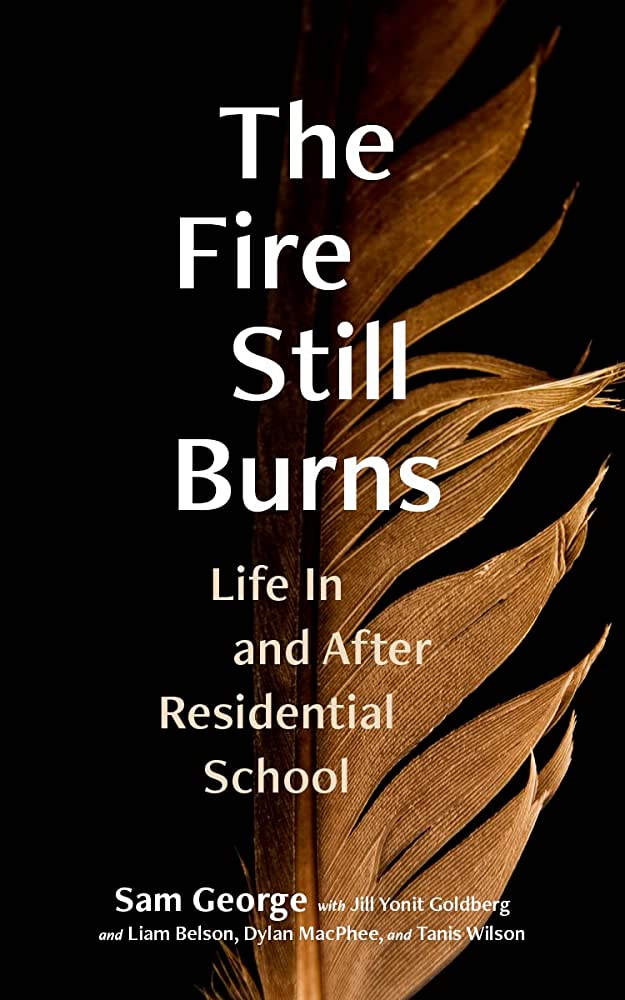Content warning: The following story contains details of residential schools. The Indian Residential School Survivor Society maintains a hotline for residential school survivors who are in crisis. The 24-hour a day crisis line can be reached at 1-800-721-0066.
Sam George has experienced the worst that Canada has to offer to Indigenous people, and his searing memoir of surviving residential school torture, addiction, and Canada’s structural racism, The Fire Still Burns, is his account of what he survived and of his lifelong struggle to undo the damage done.
We hear a lot these days about truth and reconciliation, especially in relationship to the horrific experiences Indigenous children experienced in Canada’s “Indian Residential Schools,” those infamous abattoirs of assimilation that set out to strip kids of their families, their languages and their culture. But before there can be meaningful reconciliation, there must be truth.
Truth: The residential schools were part of an explicit policy of cultural genocide, openly acknowledged by Canada’s first Prime Minister John A. MacDonald when he wrote:
“…Indian children should be withdrawn as much as possible from the parental influence, and the only way to do that would be to put them in central training industrial schools where they will acquire the habits and modes of thought of white men.”
Truth: The systematic abuse- sexual, physical and emotional- of Indigenous kids in Canadian residential schools has left a long lasting and heartbreaking legacy, with trauma cascading down the generations and harming the children and grandchildren of the children who attended the so called “schools.” The first examples in Canada of this attempt to use “education” to destroy the “Indian in the Indian” date to the 1600s, but the 19th and 20th centuries were the heyday.
From 1834 until 1996, over 150,000 children attended these government-funded and church-run institutions. 6,000 of these prisoners of prejudice are known to have died, but recent discoveries of unmarked graves at former schools and the stories told by those who survived suggest the number of deaths could well be much higher.
One key measure of this damage done by the schools and other forms of cultural genocide can be seen in suicide numbers. According to Stats Canada:
“The rate among First Nations people (24.3 deaths per 100,000 person-years at risk) was three times higher than the rate among non-Indigenous people (8.0 deaths per 100,000 person-years at risk).” No one who reads Sam George’s memoir with an open heart will be surprised that he and other victims/survivors have been tempted to end their lives. The real wonder is that so many found a way to survive and resist.
Another measure of the damage done can be seen in economic figures. According to recent research by the NGO Global Citizen: “In 2021 11 per cent of Indigenous people in Canada were unemployed, compared to seven per cent of the rest of the population. This translates to 25 per cent of Indigenous people living in poverty- and four-out-of-10 Indigenous children.”
Another measure of the damage done to Indigenous people is the scandalous over-representation of Indigenous peoples in Canadian prisons.
Although Indigenous people make up only five per cent of the Canadian population, more than 30 per cent of federal prisoners are Indigenous, and for women prisoners the Indigenous share is even greater. According to the most recent report from Ivan Zinger, the Federal Correctional Investigator, in April of 2022 and for the first time in history, Indigenous women ( five per cent of the Canadian population) made up more than half of all women in federal prisons.
Sam George was a student who survived the horrors of residential school, although, as his powerful memoir painfully illustrates, not without scars. His book, produced in collaboration with Langara College’s Writing Lives course, recounts his horrific experiences at the St. Paul’s Indian Residential School near Vancouver, and his long path to healing from the addictions and pent up, poisonous feelings the school inflicted on him and other Indigenous students.
He is unsparing in his accounts of the years lost to drugs and alcohol, and the damage he did to people close to him. But he is also able to tell the story of how reconnecting with his Indigenous roots and culture helped him heal and become a loving, contributing elder in his community. He counsels on addiction and hears his grandchildren speaking the language he was beaten for. His life and eventual triumph are a tribute to his own personal courage and to the healing impacts of renewed connection with Indigenous culture.
The author says: “I tell my story so that people like me will know they are not alone and might find comfort in that. I also tell my story so that the younger generation will learn from it and will make sure that nothing like residential school ever happens again.”
As noted, truth is necessary before real reconciliation can occur. For generations, Indigenous people in Canada have spoken their truths about racism and repression and called for real efforts from the rest of us to move toward reconciliation. Now add to that eloquent chorus the testimony of Sam George in his painful and moving memoir. We cannot plausibly plead ignorance any longer.
I urge everyone who reads this review to buy a copy of The Fire Still Burns, read it, and share it with friends and family. If you haven’t already ready done so, please read the report on Murdered and Missing Indigenous Women and Girls and the report of the Truth and Reconciliation Commission paying special attention to the calls to action from that report, many of which have not yet been accomplished.
And read other books and articles by Indigenous authors like Richard Wagamese’s classic Indian Horse and Lee Maracle’s luminous Celia’s Song.





